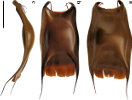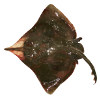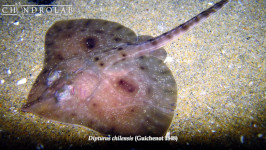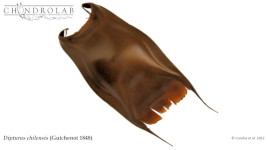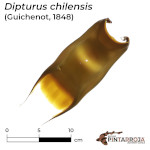Dipturus chilensis
(Guichenot, 1848)
Yellownose skate
Classification: Elasmobranchii Rajiformes Rajidae
Reference of the original description
Fauna Chilena. Peces. In C. Gay, Historia fisica y politica de Chile. Zoología, v. 2. Paris & Santiago. Fauna Chilena. Peces: 137–370
Fauna Chilena. Peces. In C. Gay, Historia fisica y politica de Chile. Zoología, v. 2. Paris & Santiago. Fauna Chilena. Peces: 137–370
Image of the original description
No image in first description.
No image in first description.
Description :
Citation: Dipturus chilensis (Guichenot, 1848): In: Database of modern sharks, rays and chimaeras, www.shark-references.com, World Wide Web electronic publication, Version 12/2025
Please send your images of "Dipturus chilensis" to info@shark-references.com

Dipturus chilensis (Guichenot, 1848), Chile © L. Ignacio Contreras, Laboratorio de Zoología de Vertebrados, Facultad de Ciencias, U. de Chile

Dipturus chilensis (Guichenot, 1848), Chile © L. Ignacio Contreras, Laboratorio de Zoología de Vertebrados, Facultad de Ciencias, U. de Chile
Parasites (arranged by Jürgen Pollerspöck)
Cestoda
Trematoda
Cestoda
- Echeneibothrium megalosoma Carvajal & Dailey, 1975 [25242]
- Echeneibothrium multiloculatum Carvajal & Dailey, 1975 [25242] [30919]
- Echeneibothrium williamsi Carvajal & Dailey, 1975 [25242] [30919]
- Rockacestus carvajali Caira, Bueno & Jensen, 2021 [30556]
Trematoda
- Otodistomum cestoides (Van Beneden, 1871) [16107]








